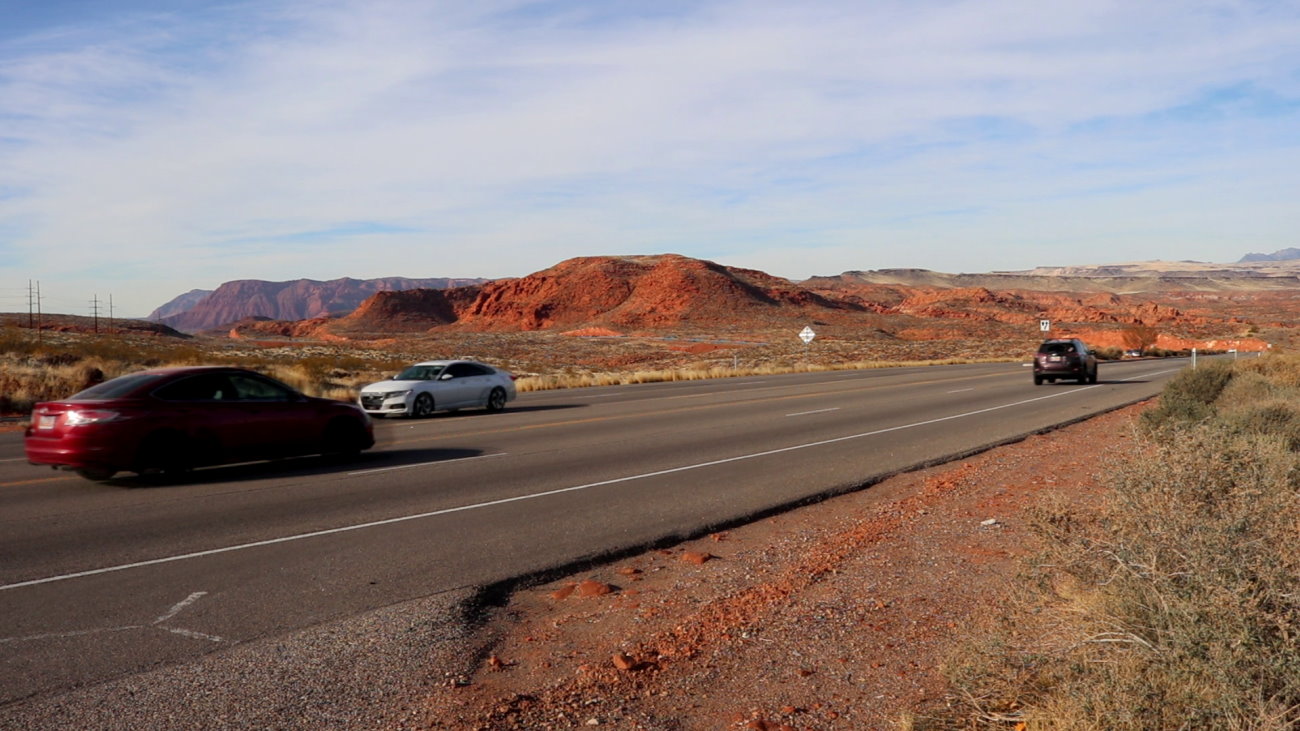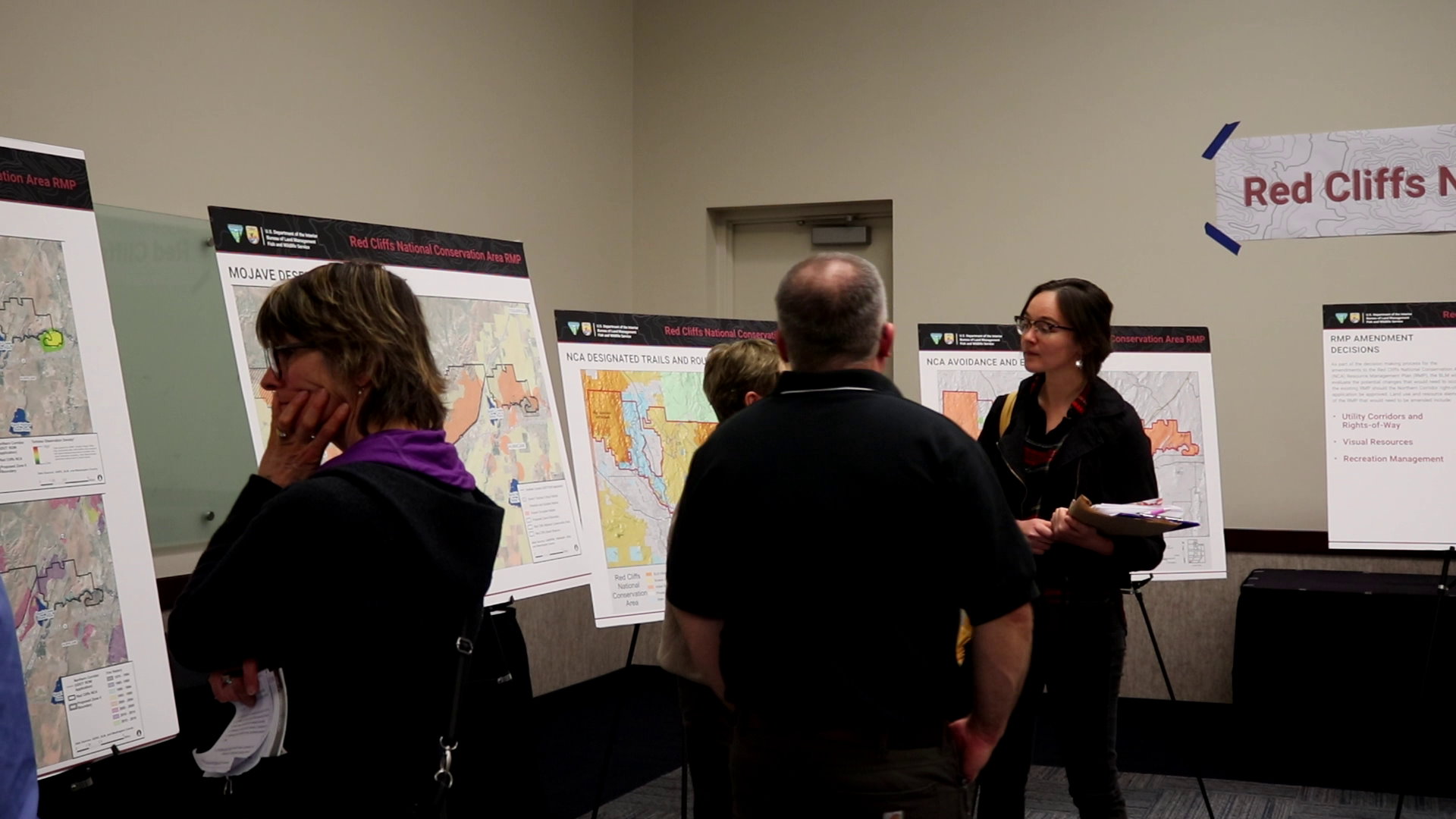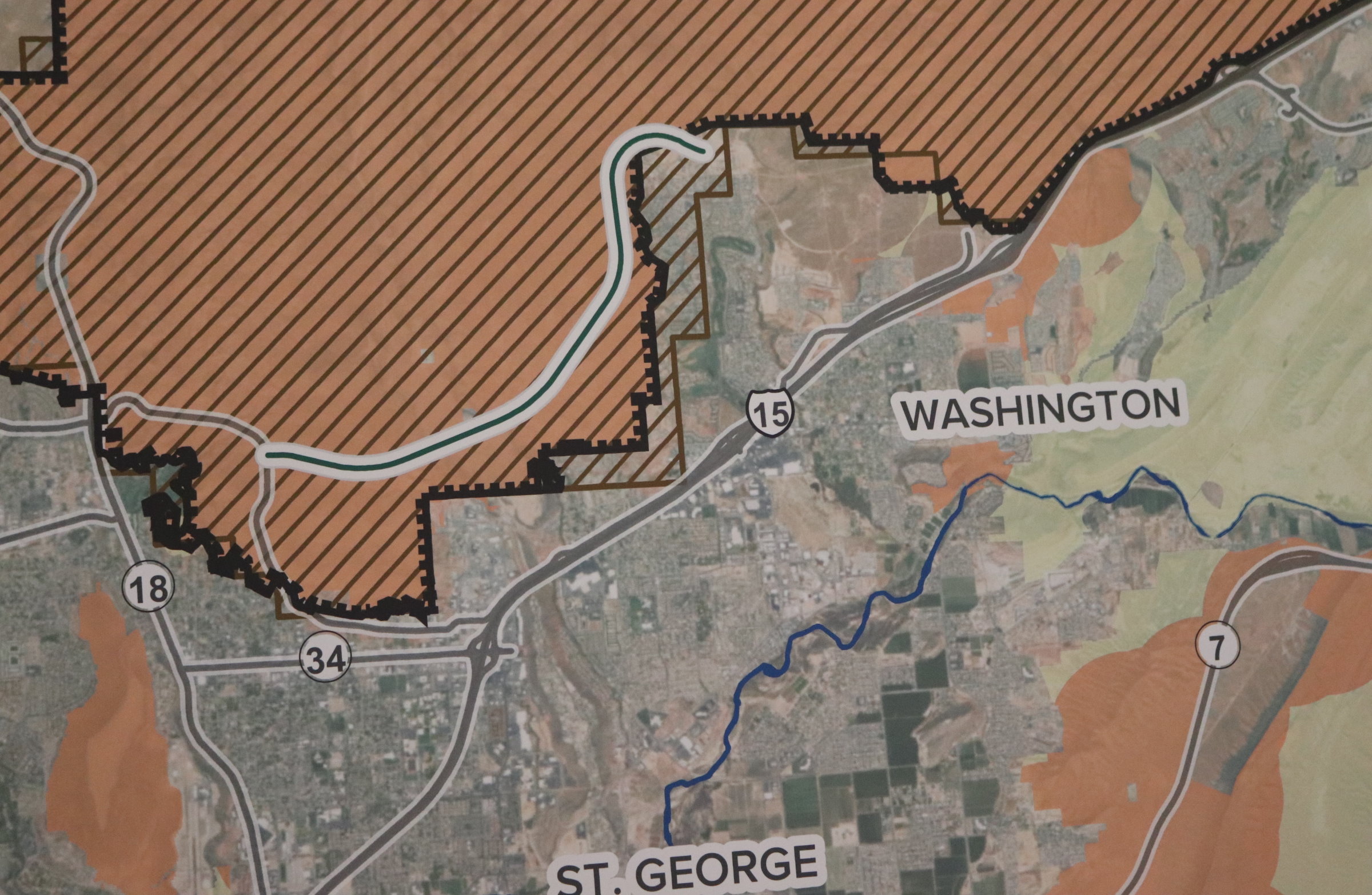ST. GEORGE — A major highway proposed to cut through the protected Red Cliffs Desert Reserve in Southern Utah is subject to new scrutiny following pending litigation by conservation advocacy groups.

The Bureau of Land Management announced Wednesday that it and the U.S. Fish and Wildlife Service “are gathering public input to inform a scientific analysis of the proposed Northern Corridor highway in Washington County.”
The new analysis, or “supplemental environmental impact statement,” follows a decision made by federal Judge Amy Berman Jackson connected to the lawsuit brought against the Interior Department in June 2021.
The new analysis is meant to build on the original one and will address procedural matters identified in court documents where the federal agencies fall short on compliance.
“BLM takes seriously our responsibility to protect natural and cultural resources, including those resources in the Red Cliffs National Conservation Area, alongside our commitment to support local communities,” Gloria Tibbetts, BLM Color Country District manager, said in a press release. “We encourage everyone to provide input so that every voice is heard, acknowledged and considered in the decision-making process.”

The focus of the scoping period is to “further consider the effects of granting a right-of-way (ROW) to the Utah Department of Transportation (UDOT) for the Northern Corridor Project (a proposed highway) as well as a potential amendment to the Incidental Take Permit (ITP) issued to Washington County,” according to the Notice of Intent on the Federal Register.
“Public involvement in this scoping period is essential for a thorough NEPA analysis that considers both conservation objectives and the needs of Washington County,” U.S. Fish and Wildlife Service biologist Josh Rasmussen said in the release.
The publication of the Notice of Intent in the Federal Register officially opens the scoping period, and the BLM will accept comments until Dec. 21. The scoping period is an opportunity for the public to provide information for the BLM and Fish and Wildlife Service to consider as the agencies collaboratively develop the draft Supplemental Environmental Impact Statement.
Lawsuit background
The proposed Northern Corridor is a four-lane roadway that would cut through a part of the Red Cliffs Desert Reserve and overlap the Red Cliffs National Conservation Area. The course of the road would stretch across 4 miles from Washington Parkway on its east end and Red Cliffs Parkway on its west end.

Conservation groups oppose the construction of the roadway because they believe it could disrupt the ecosystem and harm the habitat of protected species, particularly the Mohave desert tortoise, which is listed as threatened under the Endangered Species Act. They argue that building the road could lead to habitat fragmentation, increased vehicle traffic and potential harm to wildlife in the area.
On the other hand, proponents of the Northern Corridor argue that the road is necessary to address transportation needs and accommodate the region’s growing population. They highlight the need for improved infrastructure and increased accessibility for residents and businesses in the area.
UDOT was granted a right-of-way permit from the Interior Department in early 2021 during the last days of the Trump Administration. Local and national environmental advocacy groups like Conserve Southwest Utah, Southern Utah Wilderness Alliance, Center for Biological Diversity and others filed a lawsuit soon after to block further advancement of the proposed roadway.
The conservation groups have sought three specific goals in the lawsuit:
- Have the federal agencies reconsider and vacate the right-of-way application for the Northern Corridor.
- Remand implementation of the BLM’s associated resource management plan for the region which makes allowance for the Northern Corridor.
- Remand and amend the Washington County’s Incidental Take Permit regarding the Mohave desert tortoise.
Washington County Attorney Eric Clarke told St. George News that to “vacate’ the application would mean a complete reset of the project and wipe out any progress made.”

In contrast, to “remand” something means it allows a previous decision to remain intact while the deciding agency considers what to do next. This can result in that original decision continuing unchanged, being amended in some way or being halted entirely.
In her recent decision on a settlement agreement between the conservation groups and Interior Department, Jackson ruled that the BLM’s resource management plan and Washington County’s approved tortoise take permit would be remanded. She did not order the Northern Corridor’s right-of-way of to be vacated as requested by conservation groups, and the application was instead remanded.
The reasons for the remands involve the BLM and Fish and Wildlife Service not following proper governmental procedures regarding when they should consult with Native American tribes and others related to historical sites and artifacts that the building of the Northern Corridor could impact.
The conservation groups released a joint statement expressing their favorable view of the judge’s decision thus far.
“Today’s announcement highlights the seriousness of the deficiencies and errors in the original analysis and gives us hope that further study will lead the agencies to conclude that highways don’t belong in national conservation areas and critical habitat for vulnerable wildlife,” Isabel Adler, Red Cliffs campaign director at Conserve Southwest Utah, the lead plaintiff in the lawsuit, said in the statement.
Washington County officials are not entirely pleased with the decision, but they acknowledge the preservation of the Northern Corridor’s right-of-way for now.
“This is sacrificing tortoises for political points,” Clarke said Thursday, noting that if the right-of-way goes away, so does a segment of land the county set aside two years ago to serve as additional habitat for the desert tortoise.
Known as Zone 6, the habitat covers nearly 7,000 acres of land west of Bloomington and south of Santa Clara, where a notable desert tortoise population has existed since the area was made part of the Red Cliffs Desert Reserve. In addition to supplying a greater range for the desert tortoise, Zone 6 is also meant to serve as an offset for land that would be impacted by the roadway.

Thus far, Washington County has put over $2 million in infrastructure improvement to the area to make it more tortoise-friendly. This investment has also involved the hiring of additional county law enforcement to help cover Zone 6 and the rest of the reserve.
Clarke, like other state and local officials, argues that the Northern Corridor was promised to the county by Congress in the 2009 Omnibus Lands Bill that also created the Red Cliffs National Conservation Area. Detractors claim this was either never the case or is not what Congress had in mind when the law passed.
Additionally, there is concern about what amending the county’s incidental take permit could ultimately mean.
The permit allows the county to take tortoises found outside of the desert reserve and move them there. Clarke said being allowed to relocate the federally protected reptiles has allowed the county to grow, rather than be stalled by the tortoise’s development-halting presence.
While county officials say they believe not building the highway could have negative implications for the region’s economic growth, conservation groups say maintaining the protected land is to the benefit of Southern Utah’s human population.
“Rest assured that Conserve Southwest Utah and its partners will continue to fight for Red Cliffs NCA, because when we protect landscapes and species habitats, we’re also protecting scenic vistas, recreation opportunities, peace and quiet, and physical and mental health for ourselves and for future generations, too,” Conserve Southwest Utah Executive Director Holly Snow Canada said in the joint statement.
Clarke said county and state officials feel they have been kept out of the loop regarding discussions between the conservation groups’ lawyers and the U.S. Justice Department. Both Washington County and UDOT are listed as intervening defendants in the case since they filed to join after the original lawsuit.

While Jackson has ruled on aspects of a proposed settlement between the plaintiffs and Justice Department – a settlement Clarke says was crafted without any say from Washington County – the judge has yet to make a ruling on the continuing status of the case.
Clarke said it is hard to map out what his office will do next until the judge makes a decision on the case’s status.
Public input
A meeting from 4:30-7:30 p.m. Dec. 6 at the Dixie Center, 1835 S Convention Center Dr. in St. George, will provide the public an opportunity to ask questions or provide feedback regarding the development of the draft Supplemental Environmental Impact Statement.
To review the project website, visit BLM’s associated National NEPA Register website.
Interested parties may submit comments in the following ways:
- Online via the “participate now” feature on the National NEPA Register.
- Mail: Bureau of Land Management, Attn: Northern Corridor SEIS, 345 East Riverside Drive, St. George, UT 84790.
For further information concerning the BLM process, visit the Planning and NEPA homepage or contact the National Conservation Area Manager at 435-688-3200 or [email protected].
Copyright St. George News, SaintGeorgeUtah.com LLC, 2023, all rights reserved.